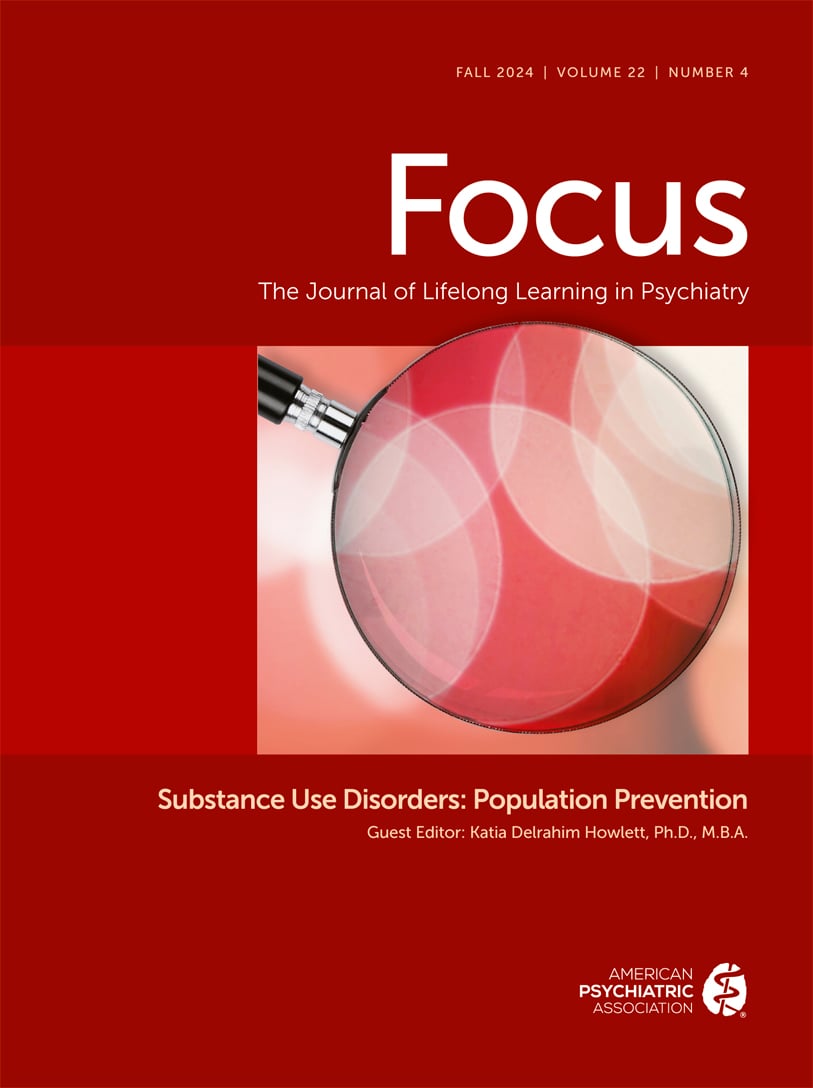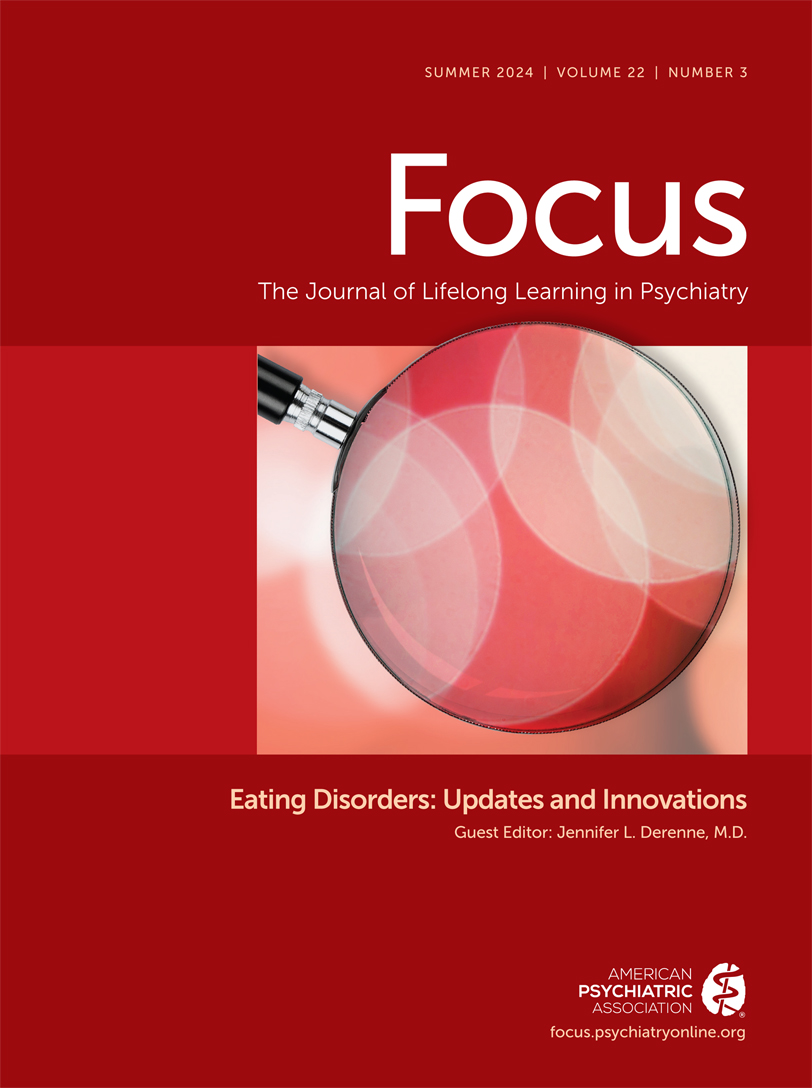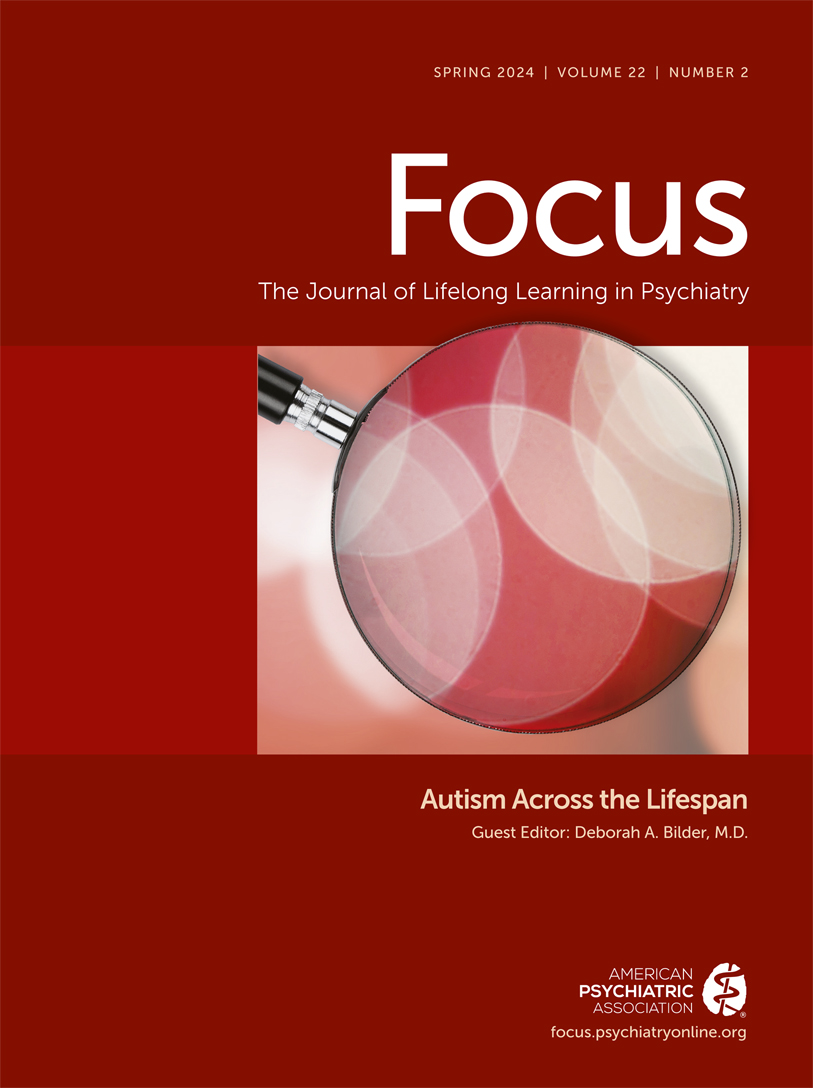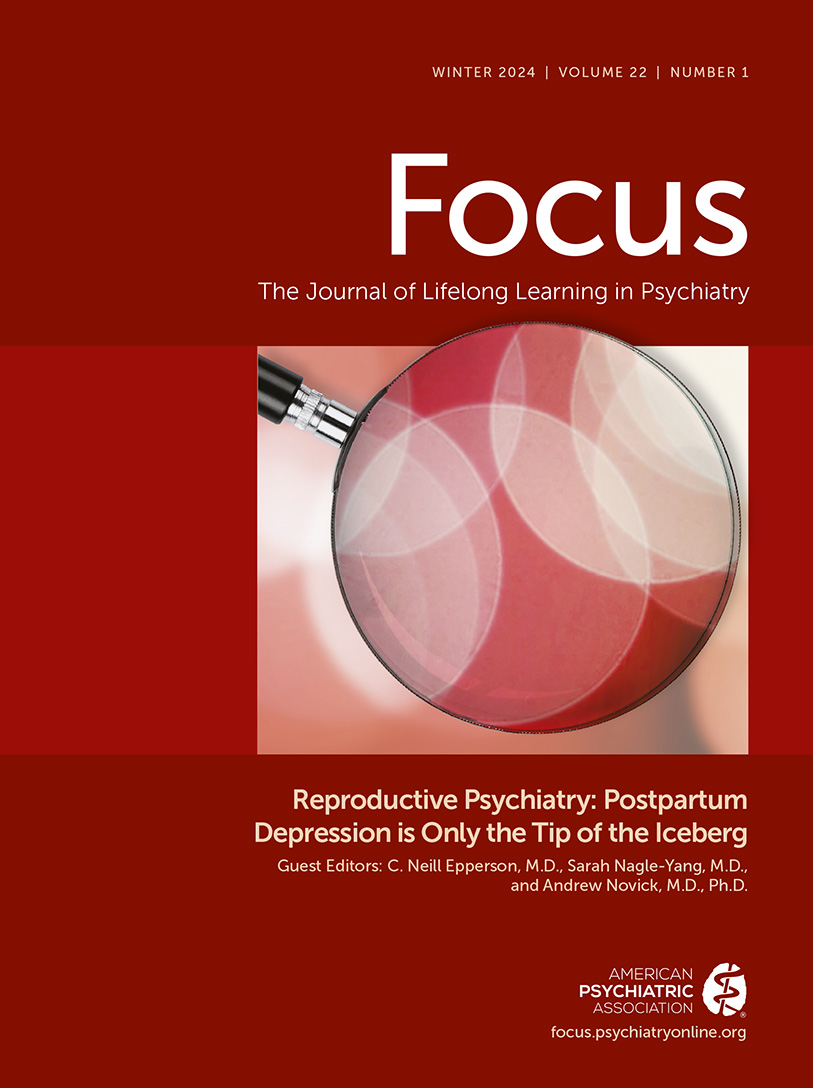Focus
- Volume 20
- Number 2
- April 2022
From the Guest Editor
Reviews
Publication date: 01 April 2022
Pages176–183Maltreatment and resultant traumatic stress can disrupt child and youth development and lead to negative effects in adulthood. A staged, trauma-informed approach to pharmacologic treatment may be beneficial for children with a history of maltreatment–...
https://doi.org/10.1176/appi.focus.20210033Publication date: 01 April 2022
Pages184–190SSRIs are the first-line psychopharmacologic intervention for youths with depression and anxiety, whereas SNRIs have a more limited role. Pharmacokinetic differences between youths and adults must be considered when using these medications and may produce ...
https://doi.org/10.1176/appi.focus.20210036Articles
Publication date: 01 April 2022
Pages191–196As rates of suicide increase among youths, understanding key risk and protective factors, identifying youths at risk, assessing the acuity of this risk, and utilizing interventions to mitigate it are important skills for clinicians involved in youth ...
https://doi.org/10.1176/appi.focus.20220039Publication date: 01 April 2022
Pages197–203Black youths have rarely been included in randomized controlled trials of treatment for self-harm and suicide or in establishment of these behavior risk factors. Suicide interventions tailored for Black youths that consider the socioecological context in ...
https://doi.org/10.1176/appi.focus.20210034Publication date: 01 April 2022
Pages204–209Family relationships can precipitate and perpetuate mental illness or can alleviate emotional and behavioral problems, leading to improved outcomes. Treatment can be enhanced by engaging patients’ family members as partners whose skills can be developed ...
https://doi.org/10.1176/appi.focus.20210035Communication Commentary
Ethics Commentary
Abstracts
Bibliography
Influential Publications
Publication date: 01 April 2022
Pages224–231Objective: The COVID-19 pandemic has brought unprecedented changes to young adults’ lives, resulting in mental health difficulties for many; however, some individuals are particularly prone to heightened anxiety. Little is known about the early life ...
https://doi.org/10.1176/appi.focus.22020002Publication date: 01 April 2022
Pages232–240Recently, research has reported that the rates of suicide among Black children between the ages of 5 to 12-years-old are increasing as they are now more likely to commit suicide than White children. Yet, there are very few, if any, frameworks being used ...
https://doi.org/10.1176/appi.focus.22020003Publication date: 01 April 2022
Pages241–251Objective: Adolescent depression is prevalent and is associated with significant morbidity and mortality. Although intravenous ketamine has shown efficacy in adult treatment-resistant depression, its efficacy in pediatric populations is unknown. The ...
https://doi.org/10.1176/appi.focus.22020004Publication date: 01 April 2022
Pages252–262Objective: Youth suicide rates in the United States have been increasing in recent years, especially in Black Americans, the reasons for which are unclear. Environmental adversity is key in youth suicidality; hence there is a need to study stressors that ...
https://doi.org/10.1176/appi.focus.22020005Past Issues
View Issues Archive
Vol. 22 | No. 4

Vol. 22 | No. 3

Vol. 22 | No. 2
